January 20, 2024 – This was a busy Saturday. I started the day out proctoring an FCC amateur license exam session. As the testing liaison for our club, an exam won’t happen unless I’m there, because I have all the materials. But I’m not complaining as our group tested six individuals and we ended up with a new Technician, three upgrades to General and two new Extra class license holders. A good day, indeed.
After the test, I decided to hit a park on my way home. The closest for me is Rib Mountain State Park, POTA K-1473. I’ve written about Rib Mountain quite a few times. Located just outside of Wausau, WI, I consider it to be my ‘local park’ and I’ve done 22 activations with 2300 contacts. Six of those were in the last two months. What I like about this park is how the activation strategy changes in the winter months.
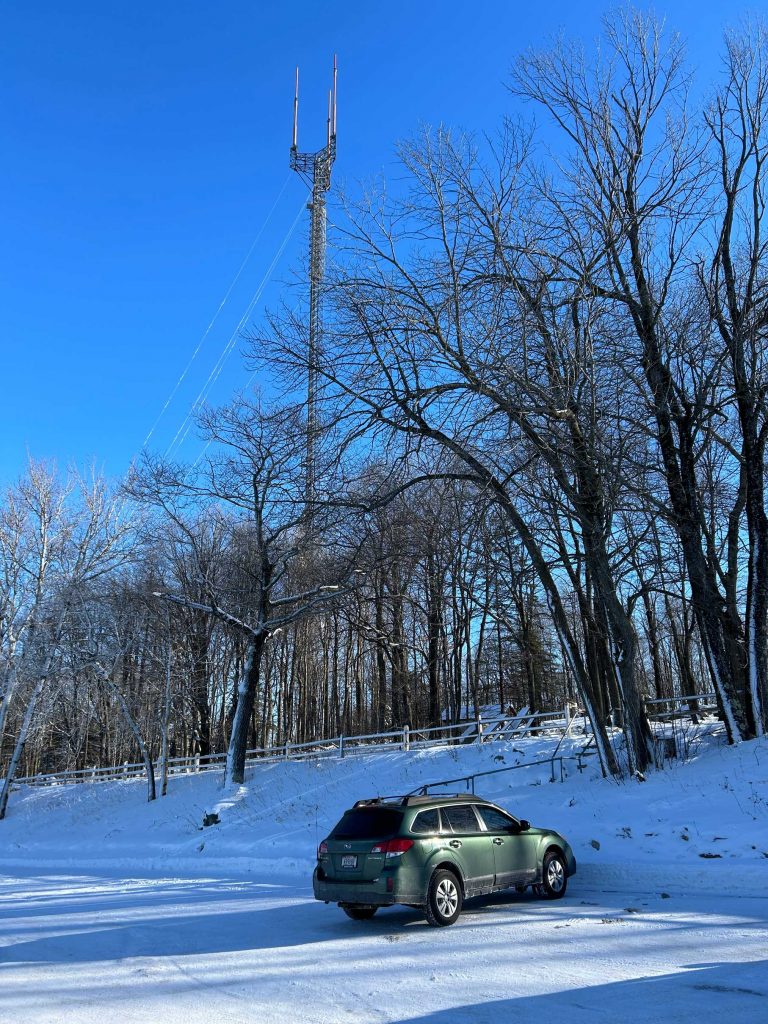
In the summer, I have a couple of favorite spots where I set up on a picnic table, but when the snow flies, the ski resort operation on the north side of the hill goes into action and all of those spots are unavailable. I end up sitting in my car and operating from the front seat.
Setup
Vertical antennas work really well in this park. Rib Mountain, while it isn’t a mountain in the true sense, its height is 1927 feet above sea level, and the peak sits about 700 feet above average terrain. I’ve had very good luck with the ¼ wave vertical antenna set up with either radials or the window screen ‘magic carpet’ ground network. But today, being January, I wanted a faster setup, so I chose the go with the Shark HF sticks.
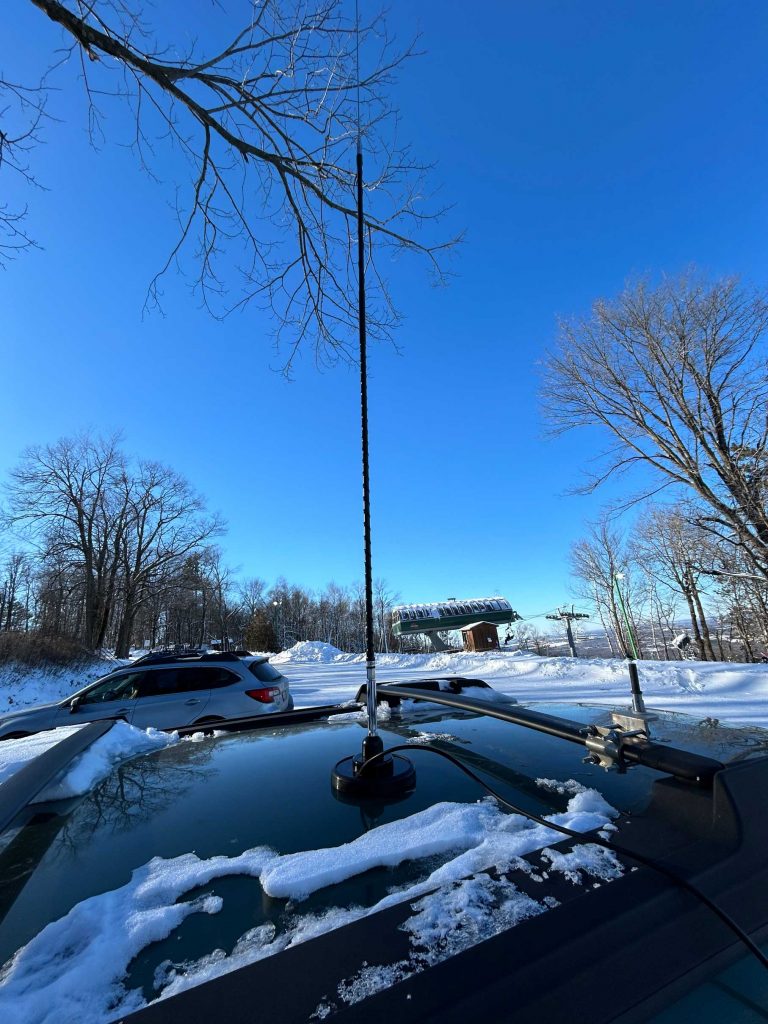
I had three sticks in the vehicle with me: the 10, 15, and 20 meter HF antennas. I knew that 40 meters would be a no-go as the noise from the ski operation chair lifts obliterate the 40 meter band. My setup with the stick is pretty simple: I use a Tram 5 inch magnet base that I put on the roof of the car and each of the sticks are fitted with quick release mounts. I slapped the base on the roof and put the 10 meter stick on the air.
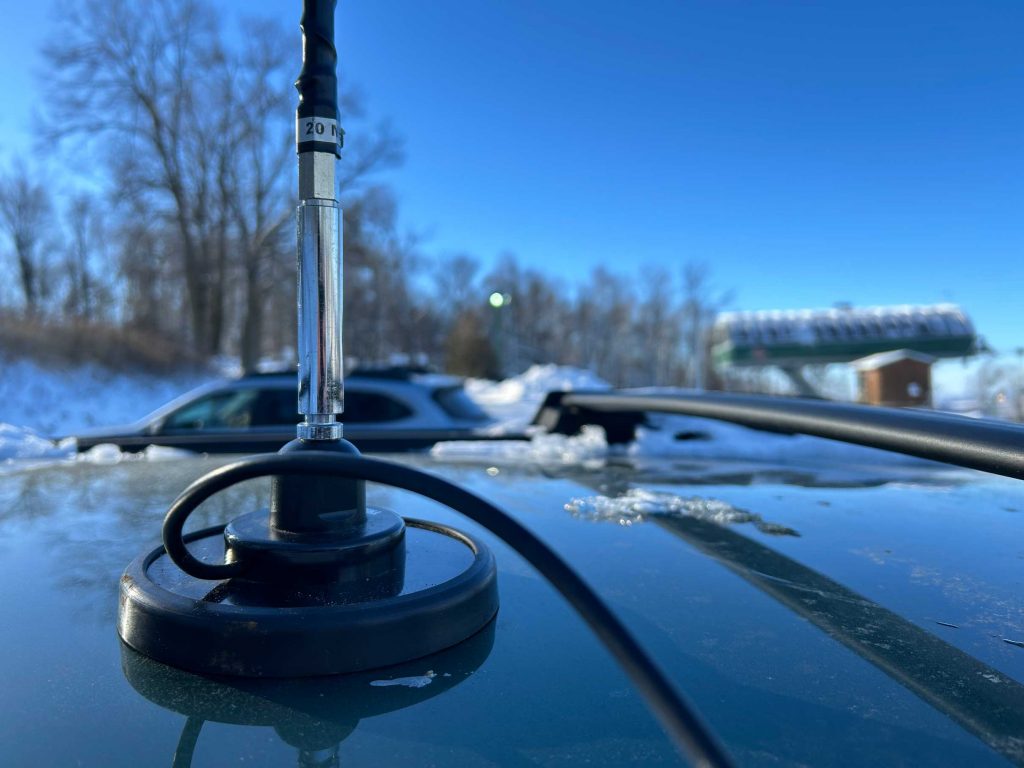
One issue I have with the HF sticks, especially the 20 meter stick, it getting a good match. I think it’s partly due to the small size of my mag mount. I’ve heard reports that the large 3-magnet bases give a better match. The solution I’ve found that works for me is to add 25 feet of coax to the 15 feet on my mag mount. The extra bit of coax isn’t enough to burn off the mismatch due to feed line losses, but I believe it acts as a bit of a counterpoise for the antenna. It’s a simple solution, and for whatever reason, it works.
The temperature on the hill today was about 10 degrees Fahrenheit with a light breeze. It wasn’t stopping the skiers, as there was plenty of activity on the hill, but I didn’t want to stay outside too long. So after quickly deploying the antenna, I retreated to the vehicle, where the engine was still running, keeping it warm.
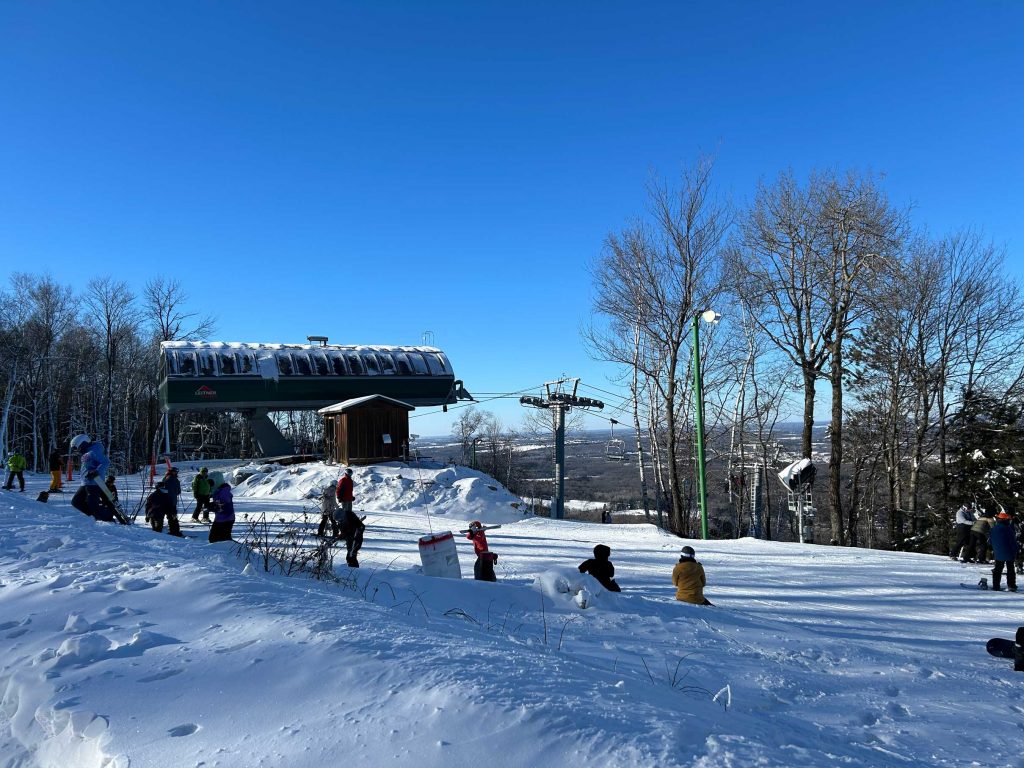
I set the FT-891 on the dash of the car and sit in the passenger seat. Doing this gives me plenty of leg room and I don’t have to contend with the steering wheel. The logging computer, running Hamrs, sits on my lap. Putting the headset on, I was ready to get on the air.
The Activation
At this point I turn the engine off and find a free frequency. 10 meters was quite active today. Apparently this weekend is the North American QSO Party and there were plenty of contesters on the air. It took a bit to find an open spot. I did find something around 28.383 MHz. spotted myself and started calling CQ POTA. For all the activity on the band, returns came in slow. I got a couple on that frequency and then I had to move as I was getting crowded by an adjacent contester. I moved all the way up to about 28.465 Mhz and resumed, after about 20 minutes I had 10 stations in the log. That’s when the band shifted and a NAQP participant showed up on frequency and started calling CQ. I didn’t fight it as I was happy with the 10, that was enough to consider this an ‘activation’ and on 10 meters, no less. That’s when I made the decision to drop down to 15 meters.
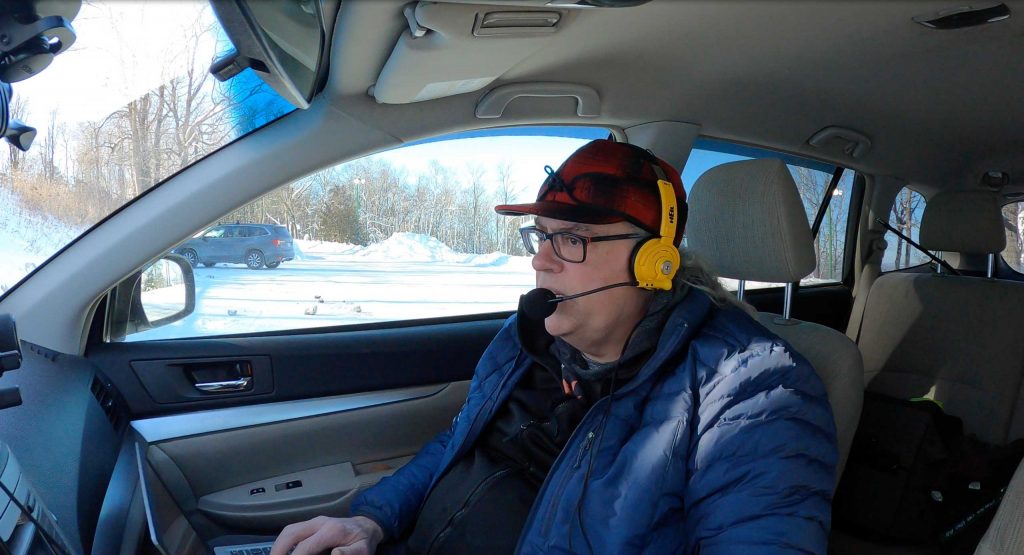
The car’s interior still felt comfortable so I didn’t restart the engine, but instead got out quick and changed from the 10 meter to 15 meter stick. It’s a fast process and took less than 2 minutes. The sticks are pretuned, so I don’t even check them with the meter, I just change and go.
Moving to 15 meters, I experienced more of the same. The band is lousy with contesters. I found a spot around 21.315 Mhz and started calling CQ. Just like 10 meters, the same happened on 15. I would get a few contacts and then the QRM got to be too much as someone would just pop up and call CQ Contest. During the course of my 15 meter activation, I moved three times and netted 24 more contacts in about 30 minutes.
I think part of the problem with my holding the frequency was the bands themselves. There was a significant amount of fading and shifting on both 10 and 15 meters. What started out as a quiet spot would be overrun as propagation moved around. While the Sharks Sticks are decent antennas, they also are a bit of a compromise, and my reduced power just couldn’t compete with stations running more optimized systems. But that never stopped me before, so I make do with what I got.
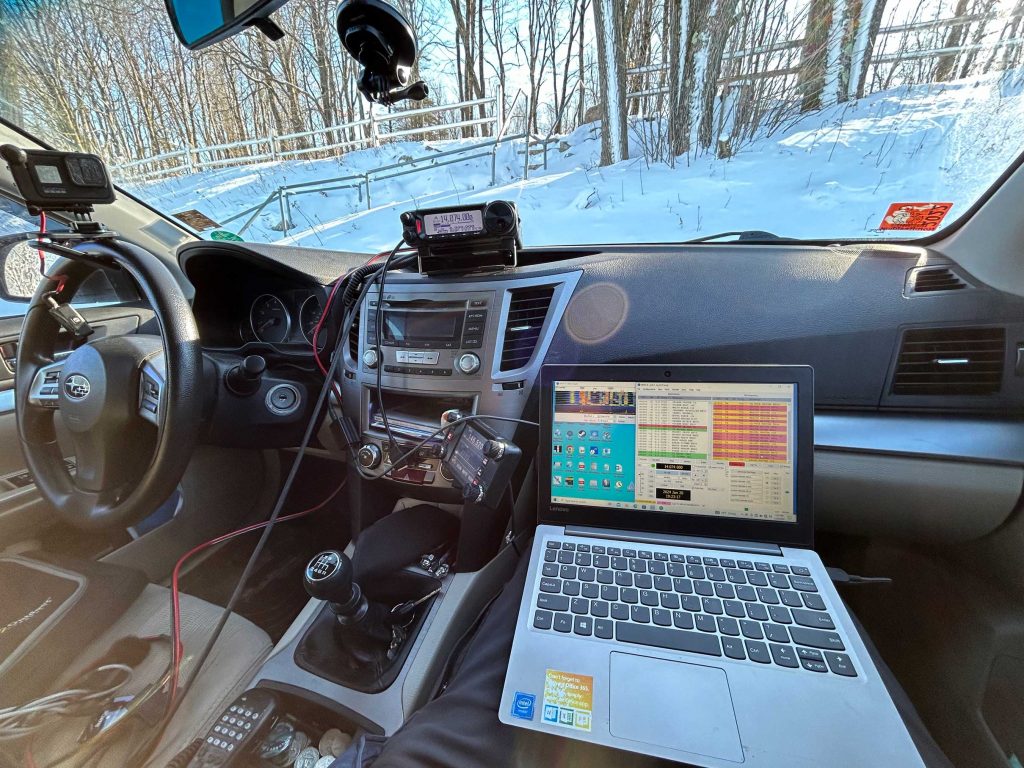
But after moving for the third time on 15 meters, I had enough of it and not quite wanting to go home yet, I decided to finish up my activation with a little bit of digital. I swapped out the antenna for the 20 meter stick, connected the Digirig to the computer, and fired up WSJT-X for some 20 meter FT8. For so much phone activity going on, and it also being Support your Parks weekend, I was a bit surprised that the waterfall on FT8 wasn’t fuller. I worked 21 stations in about 30 minutes. It took quite a bit of retries for a full QSO, either due to band conditions or my compromised situation. But by the end it was 2:00pm local time and I was getting chilly, so I shut down for the day.
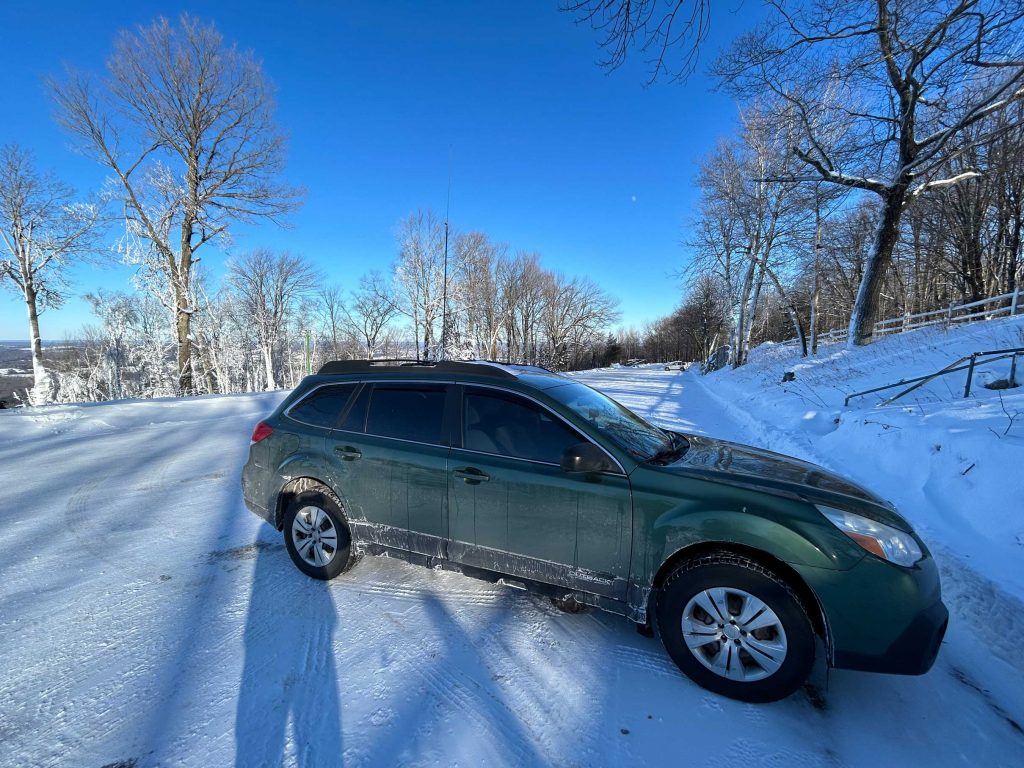
But before completely shutting down, I managed three contacts on 2 meter FM simplex. Thank you to the locals that were monitoring the frequency.
Conclusion
Doing POTA during a contest weekend can be a challenge. I don’t have any issues with contesters and I’ve done the same things when participating in a contest that they do. It’s all part of the sport. You can either join them or work around them. I chose to work around them and since I was able to respot myself, I would just QSY to a new frequency and spot. If I was in a location where spotting was more difficult, I would have been more likely to stand my ground.
At the end of the activation, I netted 58 contacts, 10 on 10 meters, 24 on 15 meters, 21 on 20 meter digital, and 3 on 2 meter FM. I received favorable signal reports from most of the stations, so the hamsticks work.
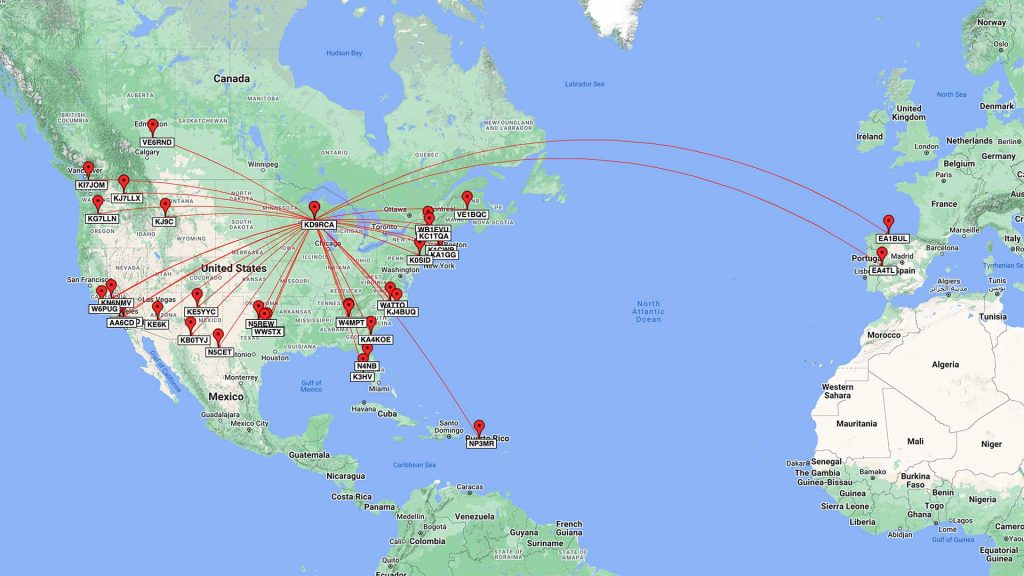
K-1473 Rib Mountain State Park 10 & 15 meter Phone contacts
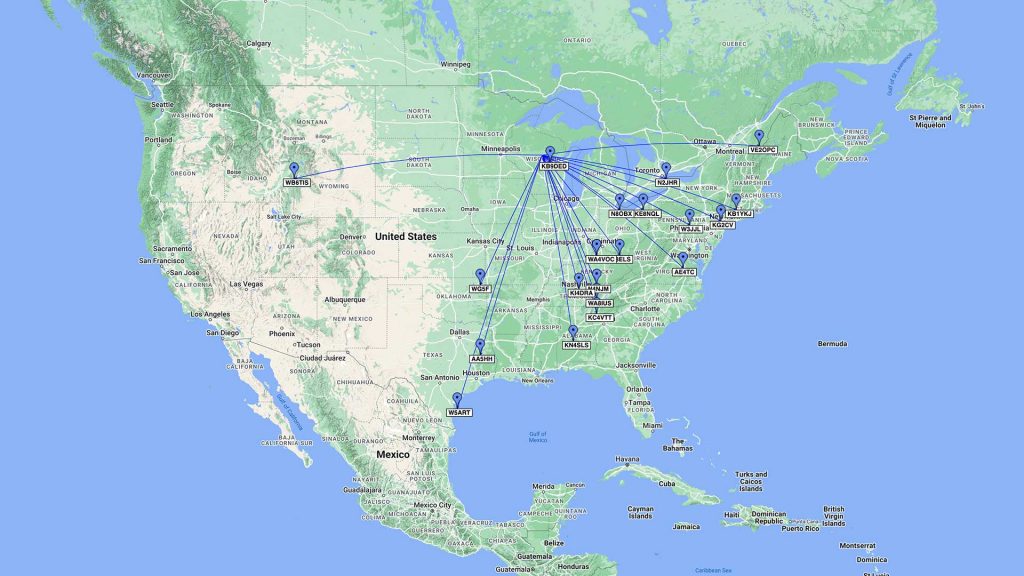
K-1473 Rib Mountain State Park 20 meter Digital Contacts
Map visualization of contacts courtesy of qsomap.com
If you go
Rib Mountain State Park
149801 State Park Rd
Wausau, WI 54401
State Park Pass required
Park open 6:00am to 11:00pm
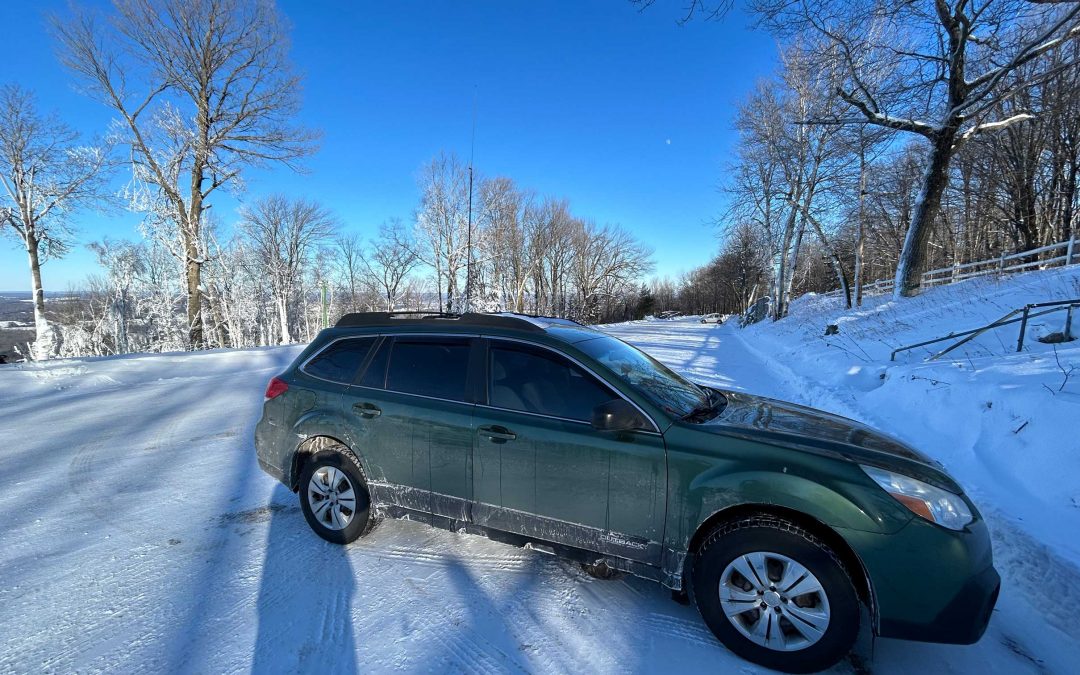
Recent Comments